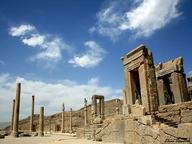Quiz Answer Key and Fun Facts
1. The Persian and Median tribes were of which origin?
2. The Median state, founded by Deiokes, began its existence under the influence of:
3. Which Median king destroyed the power of Assyria in alliance with Nabopalassar, the king of Babylon?
4. Which of these is considered the founder of the Persian Achaemenid Empire?
5. Cyrus the Great conquered which state in Asia Minor?
6. Cyrus the Great also conquered Babylon in 539 B.C. Who was the king of Babylon when this event happened?
7. This king, renowned for his cunning tactics and cruelty to his own family, conquered Egypt with the use of the cats. Who was he?
8. After the "accidental" death of Cambyses II, the Persian throne was usurped by this magus:
9. These two Persian kings failed to conquer continental Greece:
10. Darius I built a new capital. Which of these was it?
11. This Greek historian was one of the 10,000 mercenaries that supported Cyrus the Young against his brother Artaxerxes II in 401 B.C. Who was he?
12. The satrap of Caria, Mausolus, and his wife, Artemisa, are related to one of the Seven Wonders of the Ancient World, a monumental tomb. Where was it located?
13. Who is responsible for the conquest of the Persian Achaemenid Empire (334 B.C.-327 B.C.)?
14. Darius III, the last Achaemenid king, was assassinated by which satrap of Bactria?
15. The core of Achaemenid Persia became part of which Hellenistic kingdom after Alexander the Great died in 323 B.C.?
Source: Author
FrancuDaniel
This quiz was reviewed by FunTrivia editor
bloomsby before going online.
Any errors found in FunTrivia content are routinely corrected through our feedback system.

